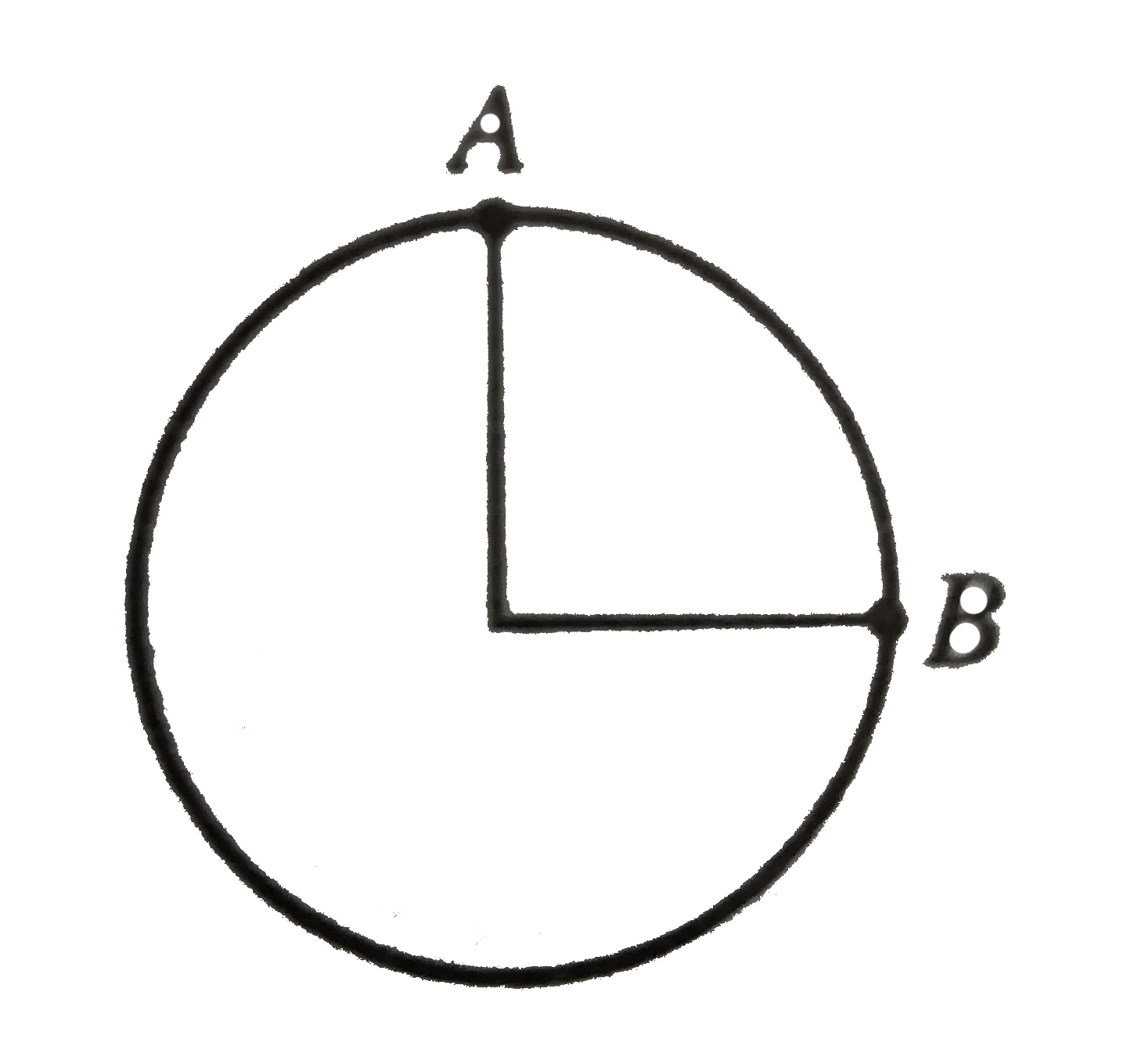A particle is moving in a circular path of radius a under the action of an attractive potential U=−k2r2. Its total energy is :
−32ka2
−k4a2
k2a2
Zero
The correct Answer is:D
To find the total energy of a particle moving in a circular path under the influence of a given potential, we can follow these steps:
Step 1: Identify the potential energy
The potential energy U is given as:
U=−k2r2
For a circular path of radius a, we substitute r with a:
U=−k2a2
Step 2: Calculate the force from the potential energy
The force F acting on the particle can be found using the relation:
F=−dUdr
Calculating the derivative:
F=−ddr(−k2r2)=kr3
Substituting r=a:
F=ka3
Step 3: Relate the force to centripetal motion
For a particle moving in a circular path, the centripetal force is given by:
F=mv2a
Setting the two expressions for force equal gives:
mv2a=ka3
From this, we can solve for mv2:
mv2=ka2
Step 4: Calculate the kinetic energy
The kinetic energy K of the particle is given by:
K=12mv2
Substituting the expression for mv2:
K=12(ka2)=k2a2
Step 5: Calculate the total energy
The total energy E of the particle is the sum of its kinetic energy and potential energy:
E=K+U
Substituting the values we found:
E=k2a2−k2a2=0
Conclusion
Thus, the total energy of the particle is:
0
The potential energy U is given as:
U=−k2r2
For a circular path of radius a, we substitute r with a:
U=−k2a2
The force F acting on the particle can be found using the relation:
F=−dUdr
Calculating the derivative:
F=−ddr(−k2r2)=kr3
Substituting r=a:
F=ka3
For a particle moving in a circular path, the centripetal force is given by:
F=mv2a
Setting the two expressions for force equal gives:
mv2a=ka3
From this, we can solve for mv2:
mv2=ka2
The kinetic energy K of the particle is given by:
K=12mv2
Substituting the expression for mv2:
K=12(ka2)=k2a2
The total energy E of the particle is the sum of its kinetic energy and potential energy:
E=K+U
Substituting the values we found:
E=k2a2−k2a2=0
Thus, the total energy of the particle is:
0
Topper's Solved these Questions
Similar Questions
A particle is moving in a circular path of radius 1 m. under the action of a centripetal force, the speed √2πms−1 of the particle is constant. Find the average of the velocity (inms−1) between A and B.
 View Solution
View SolutionIF a particle of mass m is moving in a horizontal circle of radius r with a centripetal force (−Kr2) , then its total energy is
View Solution
Knowledge Check
- Question 1 - Select One
A particle is moving in a circular path of radius r under the action of a force F. If at an instant velocity of particle is v, and speed of particle is increasing, then
A→F.→v=0B→F.→c>0C→F.→v<0D→F.→v≥0 - Question 2 - Select One or More
A particle is moving along a circular path of radius of R such that radial acceleration of particle is proportional to t2 then
ASpeed of particle is constantBMagnitude of tangential acceleration of particle is constantCSpeed of particle is proportional to timeDMagnitude of tangential acceleration is variable - Question 3 - Select One
A particle of mass M moves with constant speed along a circular path of radius r under the action of a force F. Its speed is
A√rFmB√FrC√FmrD√Fmr
A particle is moving in a circle of radius r under the action of a force F=αr2 which is directed towards centre of the circle.Total mechanical enery (kinetic energy+potential energy)of the particle is (take potential energy=0 for r=0)
View SolutionA particle of mass 'm' moves with a constant speed along a circular path of radius r under the action of a force F .Its speed is given by
View SolutionA particle of mass m moves in a circular path of radius r, under the action of force which delivers it constant power p and increases its speed. The angular acceleration of particle at time (t) is proportional
View SolutionA particle moves in a circular orbit under the action of a central attractive force inversely proportional to the distance r. The speed of the particle is
View SolutionA particle moves in a circular orbit under the action of a central attractive force which is inversely proportional to the distance 'r' . The speed of the particle is
View Solution

